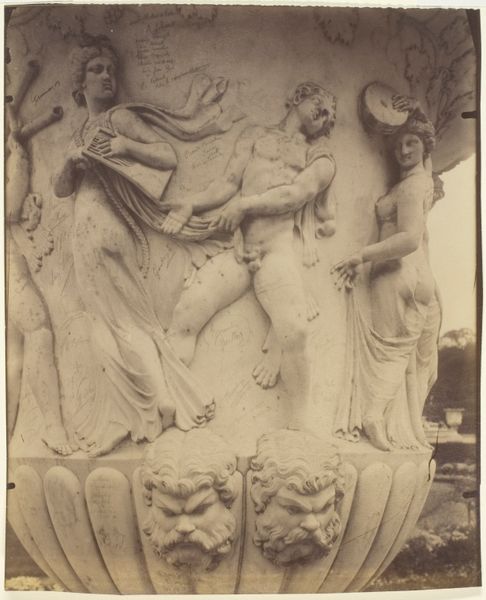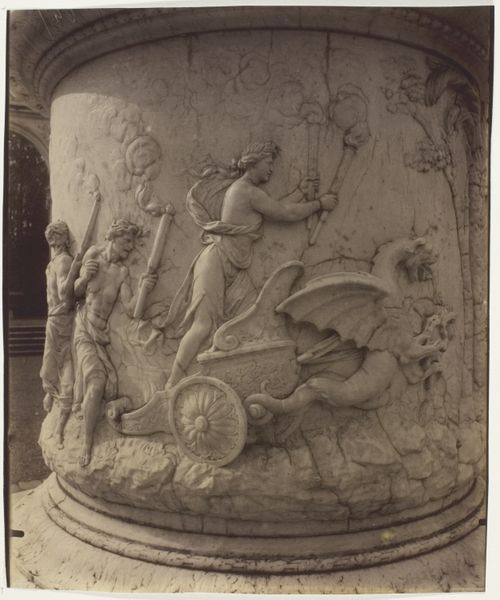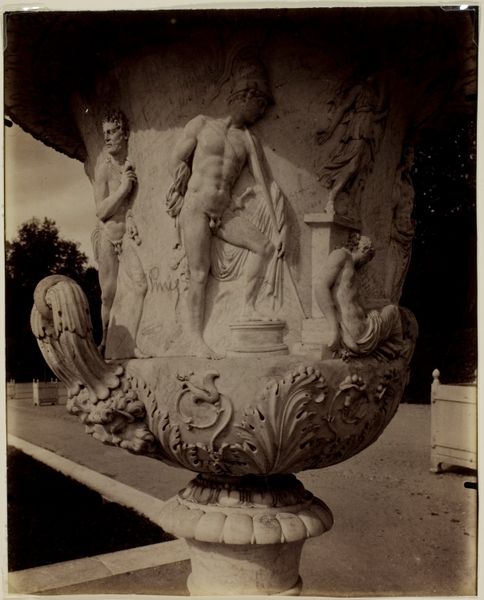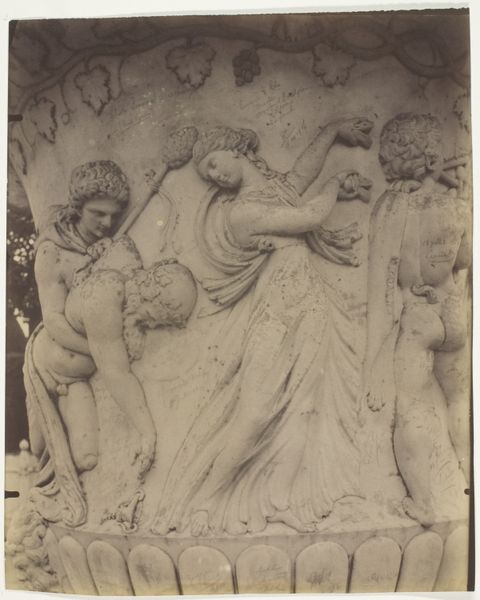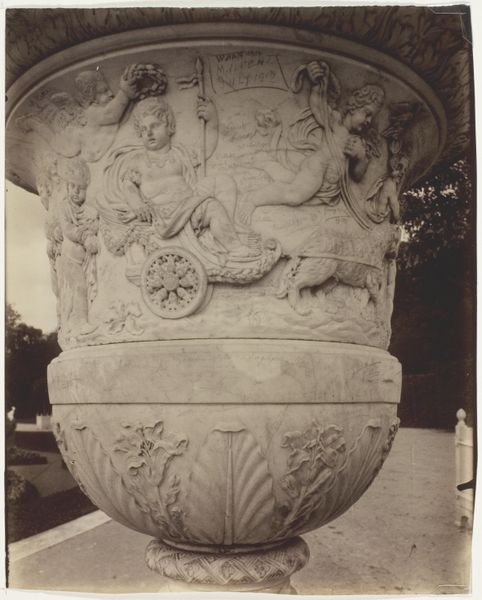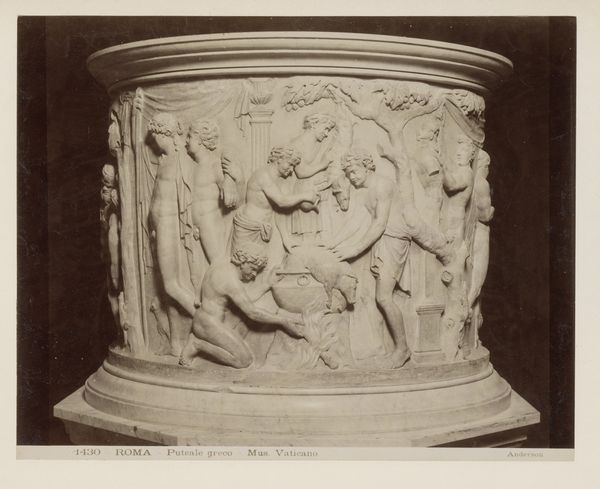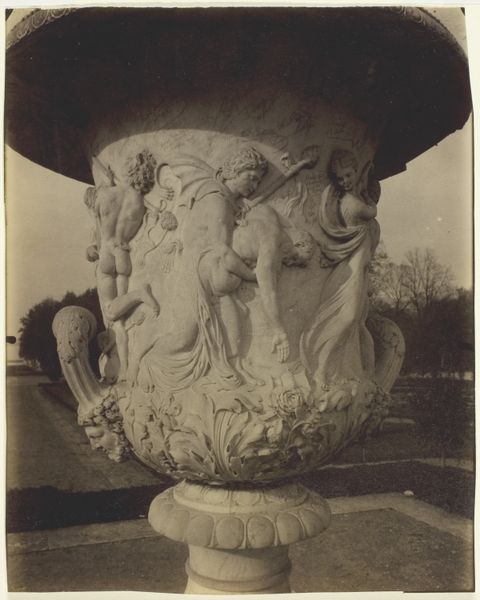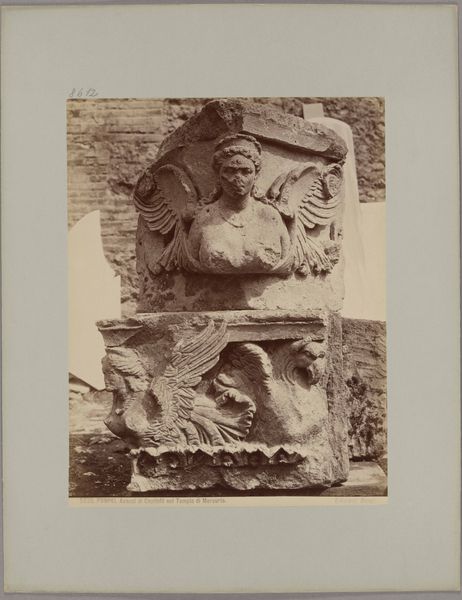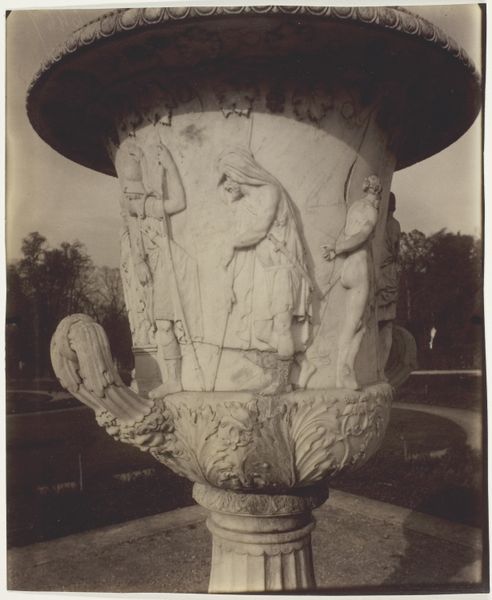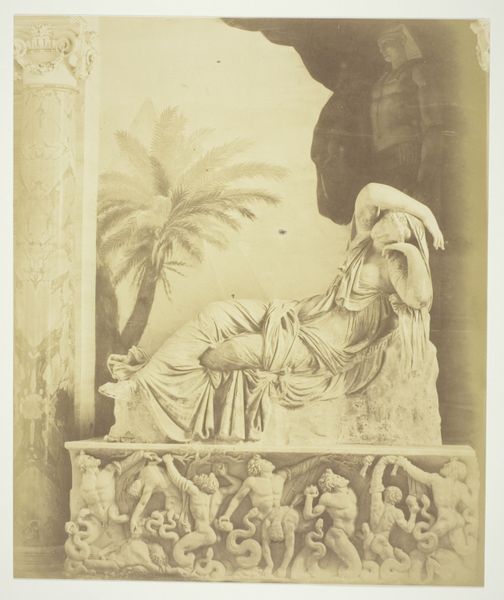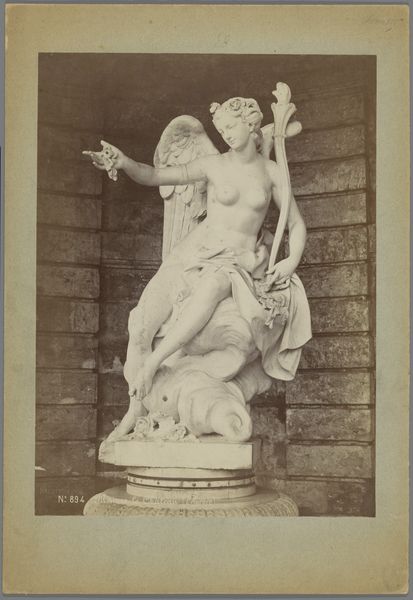
print, photography, sculpture
# print
#
sculpture
#
landscape
#
photography
#
sculpture
#
france
#
men
#
academic-art
Dimensions: 21.9 × 17.6 cm (image); 21.8 × 17.8 cm (paper)
Copyright: Public Domain
Editor: Here we have Eugène Atget's "Versailles, Vase (Detail)" from 1906, a print photograph showcased at The Art Institute of Chicago. It's a close up of a classical style vase, but something about the starkness of the monochrome against the ornate carvings feels very modern. What do you make of it? Curator: This piece speaks volumes about the cultural consumption of art, doesn't it? Atget meticulously documents Versailles, focusing on the production of its image for consumption. The vase, a mass-produced object even then, becomes a commodity fetishized for its supposed aristocratic history. The means of production, both of the vase itself and Atget’s photograph, are central. Editor: Commodity fetishized? Can you elaborate? Curator: Think about it. The vase, a physical object, becomes imbued with meaning far beyond its material composition – status, wealth, history. Atget’s photograph then packages that meaning, making it accessible, reproducible, and therefore, consumable. Consider the labor involved, both in the vase's creation and Atget's methodical documentation of Versailles, primarily for commercial reasons. It undermines any romantic vision we might have. What's more striking to you: the artistry in the vase, or its historical context of production and marketing of French grandeur? Editor: Definitely the latter. I didn't really think of the image of Versailles as a product before. I suppose it challenges that boundary between 'high art' and commercial image-making? Curator: Exactly! It's easy to overlook the social context when admiring its aesthetic beauty, and that is exactly where Atget reveals his subversive intent. Editor: I'll certainly look at other landscape shots very differently now. Thanks! Curator: My pleasure. Considering art's material origins and its consumption changes everything, doesn’t it?
Comments
No comments
Be the first to comment and join the conversation on the ultimate creative platform.
